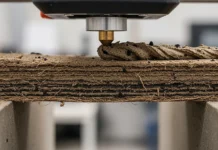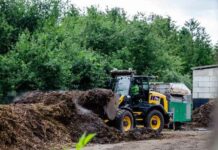Bollards can be very useful on business premises for a variety of reasons, as we shall see. But first, let’s take a look at four different types of bollards that you might like to consider using.
1. Permanent Bollards
Permanent bollards, as the name suggests, are a type of bollard that is permanently affixed to the ground. They bring an added layer of security and peace of mind regarding safety measures. Unlike other types of bollards, permanent bollards cannot be removed or repositioned.
For example, removable bollards are versatile and can be moved as needed.
If you are seeking a durable solution for vehicle control or physical security barriers in your property or workspace, consider employing permanent bollards.
2. Removable Bollards
Removable bollards are designed for versatility above all. They can be taken out and put back in as needed, offering flexibility for managing space and access controls.
If you consider an area where vehicle access needs to change frequently or is seasonal, removable bollards are a great solution.
They provide the ability to modify pedestrian foot traffic during busy times while still allowing vehicle access when required. They are practical, adaptable, and offer an effective way to manage site security.
3. Retractable Bollards
Retractable bollards are another excellent choice if flexibility in addition to security is high on your priority list.
With retractable gate bollards, for instance, you can easily raise or lower them depending on your day-to-day needs. They can retract to enable vehicular access and then be raised again to prevent other vehicles from entering.
4. Automatic Bollards
Lastly, automatic bollards could be the best option for your premises. These bollards are designed for efficiency and control at the touch of a button.
They are typically best used in areas where access needs to change rapidly and frequently, such as parking garages or government buildings where vehicle restrictions can change moment by moment.
How to Use Bollards Effectively on Your Premises
As we have seen, bollards can drastically enhance the security and access of your premises.
Here are some great ways in which you can use them effectively.
Use Bollards to Segregate Pedestrian and Vehicle Zones
Bollards are ideal options for creating safe pedestrian pathways by segregating vehicle zones. They will prevent unwanted vehicular intrusion onto pedestrian areas and make it safer for those on foot.
Ensure Accessibility Boundaries with Bollards
To aid individuals with disabilities, bollards can be used to mark out clear accessible pathways or to define parking spaces specifically designated for disabled individuals.
Delineate Space with Bollards
Boxes or large shapes made with bollard positioning can help create specifically designated spaces for loading docks, VIP vehicle parking spots, or even outdoor seating areas.
This organized structure can not only provide a more efficient use of space but also better manage traffic flow in the area.
Use Bollards to Prevent Vehicle Ramming
In places where high-security measures are needed, bollards serve as an effective barrier against potential vehicle-ramming attacks.
Bollards, especially automatic or permanent ones, offer an almost impenetrable barrier for potentially dangerous vehicles.
Utilize Removable or Retractable Bollards for Flexibility
When your location’s requirements require adaptability, consider employing removable or retractable bollards.
These flexible barriers offer the chance to rapidly alter access as per your current needs without much effort.
Final Thoughts
Look at your premises with new eyes to discover potential access and security areas that could benefit from the installation of bollards.
Once you understand the specific needs of your site, you will be able to better determine which type of bollards will be most suitable.
You should also look at other safety measures that you could employ for any of your outdoor business sites.
































